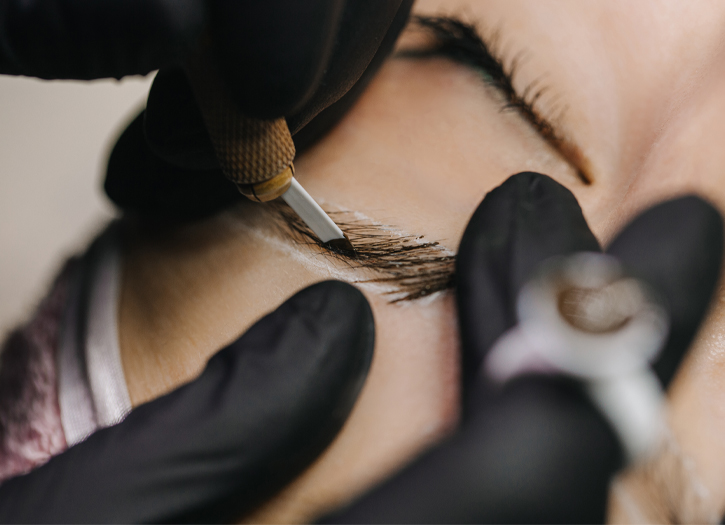Microblading is a tattooing technique in which a small handheld tool made of several tiny needles is used to add semi-permanent pigment to the skin.
Microblading differs from standard eyebrow tattooing because each hairstroke is created by hand using a blade which creates fine slices in the skin, whereas eyebrow tattoos are done with a machine and single needle bundle. Microblading is typically used on eyebrows to create, enhance or reshape their appearance in terms of both shape and color. It deposits pigment into the upper region of the dermis, so it fades more rapidly than traditional tattooing techniques, which deposit pigment deeper. Microblading artists are not necessarily tattoo artists, and vice versa, because the techniques require different training.
The technique of implanting pigment after the creation of fine incisions in the skin may date back thousands of years, but the trend towards using the technique for eyebrows is thought to have emerged in Asia within the last 25 years. Little else is known about the history of microblading. It had become the most popular method of cosmetic eyebrow tattooing in Europe and the United States by 2015, and new techniques such as 1D, 3D, and even 6D have emerged.
Microblading artists begin each appointment by discussing their client’s desired look and needs before measuring and sketching out the placement of the eyebrows. Measuring brow placement is a multi-step process that begins by determining the center of the face and the set of the client’s eyes. The starting point, arch, and ending point are determined by whether the eyes are normal, close-set, or wide-set.The artist sketches out the full brow with the appropriate thickness and arch height to give the client a good idea of what the finished brows will look like and set the outline for the microblading. Manual smooth shading (Microshading) can also be added to go over spin and between the hair strokes to visually give the dimension of natural eyebrow thickness without any sharp contours on the eyebrows.
Safety precautions for microblading are similar to those for any other tattooing technique. The most common complications and client dissatisfaction that result from any form of tattooing are misapplication of the pigment, pigment migration, colour change, and in some cases, unintended hyperpigmentation. Serious complications are uncommon. As with all forms of tattooing, risks associated with microblading include the transmission of blood-borne pathogenic organisms (e.g., HIV, hepatitis C), as well as short-term or long-term reactions to pigment ingredients. Therefore, it is essential to check that the technician holds appropriate licenses and registrations for the provision of tattoo services, as well as inquire about the technician’s standard of training.
Procedures performed by technicians who have completed a comprehensive course of instruction can minimize the risk of unwanted outcomes and client dissatisfaction.







Add Comment
You must be logged in to post a comment.